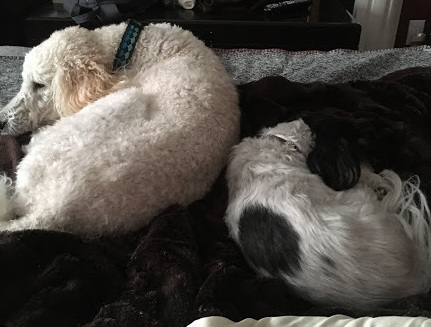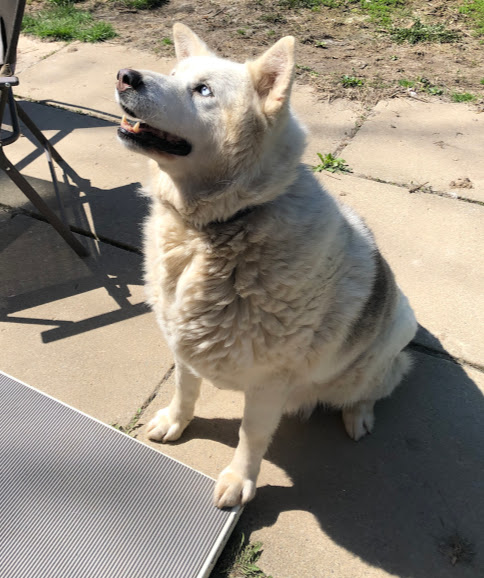Getting a new puppy is always an exciting adventure. The excitement of a cute tiny being taking over your life and your home and what better time than during social distancing than when you are forced to stay home, right? Well….Let’s just say maybe.

First of all, it is important to remember that a puppy is a long term commitment and will be around a long time after things return to a more normal state. If you weren’t thinking of getting a puppy before you were home this might not be the right time either.
But what if you were planning to get one within the next year or so, isn’t this the perfect time to do it since you will be home to train, bond and play with the little ball of fur?
Training a puppy is definitely easier when you are home. As far as it being a good time to get a puppy now, I would have to say “yes” and “no”, but probably not.
Pros to getting a puppy now is that you will have the opportunity to take the puppy out more frequently in order to house break him/her. You will also have a lot of time to exercise, train and bond with a new puppy. You will hopefully get through that very intense puppy stage before you return to work full time again.
A puppy can also act as a distraction and give you a sense of purpose in a time when things may not be quite so routine. Distraction, routine setting and unconditional love seem to be a puppy’s forte. Your mental health may be positively affected through the care and training of a new little friend.
On the other hand: 1. The most important thing at this time is respecting social distancing and only leaving the house for essential reasons. It is difficult to social distance to pick up your puppy from the breeder and traveling to the breeder also puts you and others at risk of accidents on your way to and from.
2. Dogs are social beings but they need to be exposed to a lot of situations, people and pets early on in life. The more things that they are exposed to in a positive way when they are young, the better adjusted and less anxious they tend to be. If you plan to take your dog to a lot of events, meet a lot of people etc. when they are older you would want to socialize them as a puppy. This can be very difficult if not impossible with social distancing. However, if you are a homebody or plan to leave your dog at home when you attend events this may not be as much of an issue.
3. Groomers are closed during this time and Veterinarians are only providing essential or urgent services, depending on your location so it will most likely be difficult to ensure that your puppy is healthy and dewormed. It may be impossible to get your puppy vaccinated which can leave your puppy vulnerable to infectious diseases. If you keep your puppy inside and are able to do some basic grooming yourself then this may not be an issue.
Can dogs carry the novel coronavirus? There has not been any evidence that dogs can transmit the virus, however, just as your hands could spread the virus if they came in contact with it there is a risk that your pet’s fur could possibly do the same. That is IF an INFECTED person coughed on, sneezed on, or petted your dog the virus particles could be on their fur and then could be transmitted to the next person who petted him/her. At this time we are recommending social distancing for pets as well to prevent this from happening. We also recommend that COVID-19 positive patients do not care for their own pets to prevent this.
If you do decide to get a puppy at this time, I would recommend a video-conference with a veterinarian to help to answer your questions and be sure that you are keeping your puppy as healthy as possible until they can be examined by a veterinarian. Your veterinarian can help you choose a healthy diet and discuss preventative care you can do at home. They may also be able to help with parasite treatments and preventions which are especially important this time of year.

Since groomers are closed you will want to have some grooming products on hand such as a brush, comb, shampoo and nail trimmers and learn to do these things yourself. This will help to keep your pet healthy and train your puppy that these things can be fun and rewarding.
Other products that are important are bowls (stainless steel or ceramic are best as some dogs react to plastic). leashes (not retractable) and a comfortable collar or even better, a body harness.
Indestructible toys are also important to redirect chewing. Toys which you can line with a thin layer of peanut butter or cream cheese and treats can be put it in the freezer to extend the chewing time. I don’t recommend anything that is very hard plastic or that has pieces, such as eyes that can be chewed off.
It is also important to consider the costs involved with caring for a puppy, an adult dog and a senior dog. You can discuss these costs with your groomer and veterinarian for a better idea of what your new puppy will cost now and as he/she ages.
Pet Insurance is a good way to mitigate emergency and other unexpected veterinary costs. Premiums are different depending on breed, your location, the plan you choose and the company you choose. They should each have a website and 1-800 phone number to help you decide which is best for you. Some questions to ask include:
- 1. What do you cover?
- 2. What is the deductible?
- 3. When does the deductible reset?
- 4. Is there a maximum coverage?
- 5. Is the maximum for an individual organ system or for the whole pet.
- 6. Does the Maximum ever reset?
- 7. Do I need pre-approval?
- 8. Do you pay me or direct to vet?
- 9. Any other questions that are important to you.
Some of the companies we see frequently are: Trupanion, Pet Plan, Pets Plus Us (also available through Costco), Pet Secure.
If you do choose to get a new puppy, we would love to see your pictures and hear about all of your furry adventures.

Take care and Stay Safe.
Dr. Janet Henderson
416-895-7164















